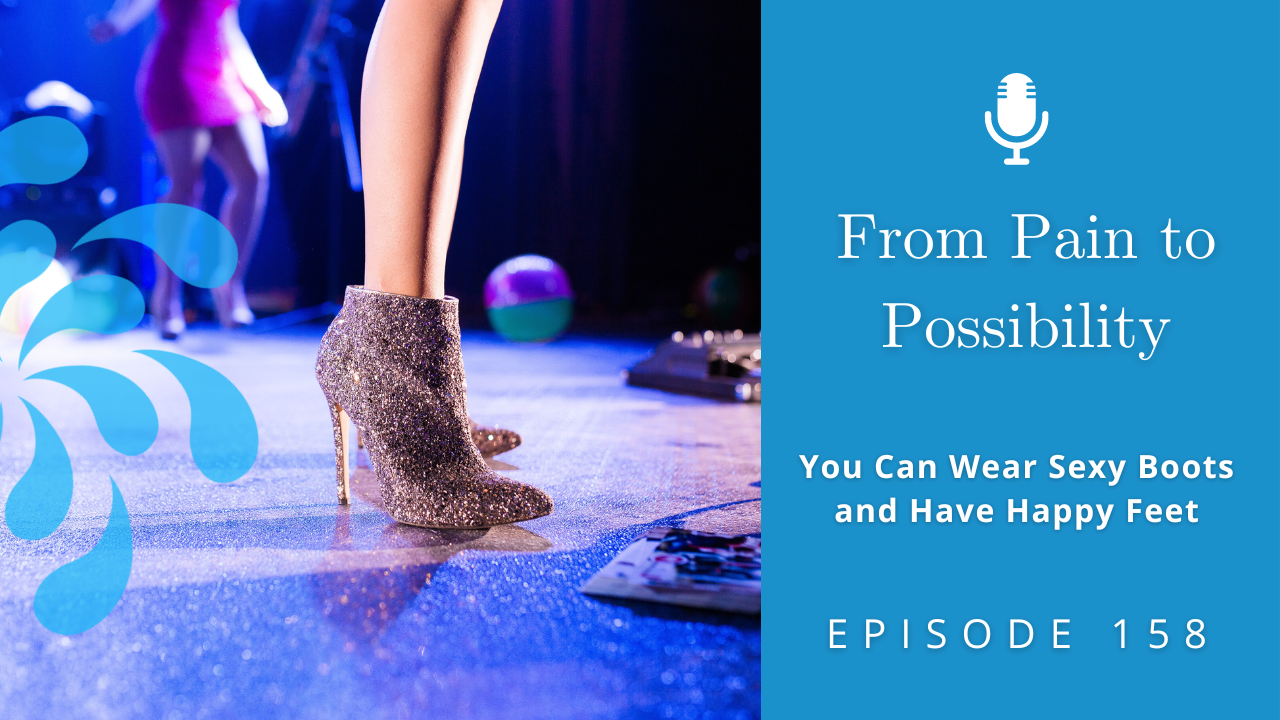If you spend any length of time exploring trainings and listening to experts who are doing corrective exercises with feet, almost all of them will tell you about footwear, and how it is problematic for the feet. And I don’t disagree. But there are times when sexy footwear is in order, so how do you work with that?
Those sexy boots you have in your closet were made for walking, and you do not have to put them away. Our joints enable us to move in a variety of different positions, so why not allow for it? That’s exactly what I’m talking about in the last episode of the Exploring Your Feet miniseries this week.
In this episode, I help you rock those boots and shoes in an awesome way. I share 5 key things I think about when helping people get into sexy boots, and the considerations I utilize when working with people who want to wear them.
Subscribe: Apple Podcasts | Spotify

